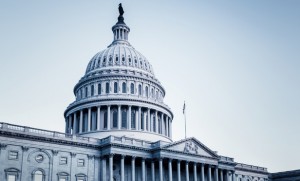What lies ahead - the key trends set to define the legal profession in 2017
From political uncertainty to the power of tech, a look at the key issues for the year ahead
December 20, 2016 at 05:18 AM
16 minute read
Overall, 2016 was a year of huge change for the legal profession. Here are seven big developments from the past 12 months and what they might mean for 2017.
1. Growth slows for large firms
The news: Financials for the world's largest law firms indicate sluggish growth.
The details: The good news is that the top 100 US law firms and top 100 global firms achieved a sixth consecutive year of aggregate top-line growth in 2015. The not quite so good news? The Am Law 100′s 2.7% increase in collective revenue represented the group's lowest annual gain for more than two decades, excluding the recession in 2008 and 2009. The 3.3% increase in net income was also a significant slowdown compared with the 7.4% growth achieved in the previous year.
The Global 100 fared only slightly better, with total revenue increasing 3.1%, to $96.6bn.
Wachtell Lipton Rosen & Katz stood out as the only Global 100 firm to increase its net income, revenue per lawyer (RPL) and profits per equity partner (PEP) by more than 20% each. Its PEP rose to $6.6m – more than $2m greater than any other firm in either survey.
UK firms fared less well, although their figures were heavily skewed by a significant weakening of the pound. Freshfields Bruckhaus Deringer posted a 6.6% increase in revenue and a 7.5% increase in PEP, for example, but when its results were converted to dollars it suffered contractions across all key metrics.
Why this matters: The results illustrate the challenging underlying market conditions, with firms facing a combination of increased pressure from clients on fees, stagnation of overall demand for high-end legal services and turbulence in several core international jurisdictions.
As we saw during the recession, many firms responded by tightening their equity in an attempt to maintain average partner profits. Total equity partner numbers across The Am Law 100 fell 0.6% in 2015, to 20,337 – the first annual decline in six years. Almost half of the 77 US firms that posted increases in PEP in 2015 reduced their equity partner headcount. Ten of those firms would otherwise have seen a reduction in PEP.
The data also highlights ongoing consolidation in the industry, both in the US and globally. The Am Law 100 and Global 100 rankings continue to be increasingly top-heavy. In 2000, just one Global 100 firm had revenues exceeding $1bn: Skadden Arps Slate Meagher & Flom. Today, 35 firms have exceeded that milestone.
No single firm contributed to this trend last year more than Dentons. The firm completed no fewer than six combinations in the last financial year, including a tie-up with 4,000-lawyer Chinese giant Dacheng. The various deals increased Dentons' revenue by more than 65%, from $1.28bn to $2.12bn. It also almost tripled the firm's headcount, which now stands at more than 6,500 lawyers, making it comfortably the world's largest law firm by that measure.
What it means for 2017 and beyond: If the Global 100 continues to grow at its current rate, the group's total revenue will top $100bn next year.
The continued recovery of the US economy means that many US firms are relatively bullish about the year ahead. It's unclear how Donald Trump's shock election victory might affect that. But thanks to the Brexit vote, UK firms face an uncertain 2017. The European Union (EU) referendum result has led to a slowdown in transactional activity and a significant decline in the value of UK currency, which is likely to have an even more dramatic effect on next year's Global 100 survey.
As of mid-November, the pound was trading at just $1.24. Applying that exchange rate to last year's results would see Berwin Leighton Paisner and Taylor Wessing drop out of the Global 100 entirely.
The news: Regulatory law practices in Washington, DC have been booming, thanks in no small part to rulemaking during the Obama administration. A Trump administration could keep the intensity on some areas, such as antitrust regulatory law, while deregulating in others.
The details: Washington, long a necessary outpost for many large law firms, has become central to many in the legal industry.
Last year, 14 Am Law 100 firms reported that their largest offices were in Washington. That includes several firms founded elsewhere, such as Akin Gump Strauss Hauer & Feld, and Morgan Lewis & Bockius.
Large firms including Reed Smith and Pillsbury Winthrop Shaw Pittman chose new firm-wide chairs or managing partners from Washington in recent years. The structural developments aren't coincidental to what drives legal business in DC.
Regulatory law and litigation involving federal agencies have pumped traditional Washington law firms, including Covington & Burling and Wilmer Cutler Pickering Hale and Dorr, with profit and revenue per lawyer growth in recent years.
Cybersecurity, Foreign Corrupt Practices Act (FCPA) law, financial regulation and corporate monitorships were some of Big Law's growth practices during the Obama administration. FCPA enforcement, which results in corporate defence lawyers fielding internal investigations and white-collar litigation responses, has been on the upswing since the George W Bush administration.
The other areas of expansion owe themselves to the government response after the financial crisis, including the creation of the Consumer Financial Protection Bureau in 2011, and the advancement of technology.
Why this matters: A powerful federal government, even under a Republican president, will continue to demand that large law firms take their Washington offices seriously. Firms already there, especially those with large regulatory practices, could benefit the most. "You need to have a strong regulatory practice," says Alice Valder Curran, Hogan Lovells' head of the global government regulatory department. "Any sort of firm in the Washington legal market now is trying to establish and grow a regulatory practice."
Curran is based in Washington and leads more than 400 lawyers in 14 practice areas. "The Obama administration has been noted for its expansion of executive power," she says. The global financial crisis in 2009 and the UK's Brexit vote this year are other watershed moments that spurred regulation. She adds: "I do not see it going away."
What it means for 2017 and beyond: Washington's lawyers expect trade deals to be renegotiated, tax code to be rewritten, media mergers to be challenged and healthcare to be overhauled when President Donald Trump comes to town. Much about the new administration's policies is unpredictable. Yet even as the government unwinds laws and regulation, lawyers will have work to do. "Change does tend to lead to demand for legal services," said Timothy Hester, chairman of DC's largest firm, Covington & Burling, after the election.
The news: The shocking Brexit vote leads to questions about the future role of London as the European capital of Big Law.
The details: After a divisive and close-run referendum campaign, the polls predicted a narrow victory for Remain. But in a stunning result, the British public voted by a 52% majority to leave the EU.
Why this matters: The unexpected outcome sent law firms into overdrive. Firms were inundated by queries from clients trying to make sense of the unprecedented event. Several set up special telephone hotlines, manned by lawyers around the clock, to handle the vast levels of client demand. Brexit email briefings were fired out at record rates.
After the initial frenzy, things have calmed down. A little too much, in fact. The widespread uncertainty caused by Brexit has dented market confidence and stifled investment. M&A activity has slowed significantly, while a number of UK initial public offerings have been shelved.
What it means for 2017 and beyond: Yet more uncertainty. Formal Brexit negotiations aren't scheduled to start until March and the process isn't likely to be completed before 2019. That's if it happens at all. The High Court ruled in November that the Brexit process must be subject to a parliamentary vote. UK politicians, the majority of whom wanted the country to remain within the EU, could now theoretically delay or even block the process.
Once exit negotiations do begin and the situation starts to become clearer, firms will be called upon to help clients navigate what will be one of the largest programmes of regulatory and legislative reform ever seen. There will also be some choice government advisory roles up for grabs.
There are broader concerns that Brexit may lead to some banks, companies and even global law firms shifting business from London to other European cities such as Frankfurt and Paris – particularly following indications that the UK may seek to leave the European single market in a so-called hard Brexit. But like almost everything Brexit-related at the moment, the actual outcome remains to be seen.
The news: Big Law's use of technology has increasingly centered around keeping information safe and secure.
The details: "Security and information governance are the two most time-consuming, worry-consuming and expense-creating activities in legal technology," says Michael Mills, co-founder and chief strategy officer of Neota Logic, which makes software for legal matters and compliance. "Most firms until recently have had very open systems, except for M&A deals and internal investigations," says Mills, the former CIO of Davis Polk & Wardwell. "More firms are following a practice called hiving – locking down information to those who need to know."
When it comes to Big Law's use of artificial intelligence (AI), it appears that corporate lawyers, not litigators, are leading the way. "There seems to be quicker adoption of artificial intelligence tools by corporate lawyers for things like contract review. Litigators have been slower to adopt it for discovery," says Maura Grossman, who runs the e-discovery consulting practice Maura Grossman Law and who developed a machine learning e-discovery system when she was of counsel at Wachtell Lipton Rosen & Katz.
"Maybe it's the difference in personality between corporate lawyers and litigators," Grossman says. "Corporate lawyers want to get deals done expeditiously, while litigators see the minefields."
Why this matters: "The hot activity in [Big Law's use of AI] still is in contract analytics," Mills says. Neota Logic recently announced that it is working with Clifford Chance to develop an automated process to analyse the impact of new regulations on financial institutions. But this area isn't Big Law's top tech priority. "Does it represent anything like what goes into security?" he asks. "Not a chance."
In the past year, firms including Latham & Watkins and Baker & Hostetler have licensed an AI product for legal research in the bankruptcy arena developed by ROSS Intelligence, which uses IBM's Watson technology. ROSS founder Andrew Arruda has said he's aiming to extend this technology to many more practice areas.
What this means for 2017 and beyond: Grossman is cautiously optimistic about what AI can do for Big Law. "AI is the new big shiny object," says Grossman. "But it probably won't be as magical as some people hope. Instead, it will augment what lawyers do."
Law firms are showing renewed interest in using social networking tools such as Slack, HipChat and Microsoft's new Teams product to communicate internally, moving away from email, according to Mills. He notes that most products that have caught on among lawyers have very simple user interfaces. "Lawyers have an extremely short payback period," he says. "A new technology has to appear useful to them personally in about 20 minutes or they won't use it."
The news: It was a year of management transition for many leading law firms.
The details: New leaders were announced at more than a dozen firms, including Allen & Overy, Ashurst, Baker McKenzie, Cleary Gottlieb Steen & Hamilton, DLA Piper, Eversheds, Greenberg Traurig, Herbert Smith Freehills, K&L Gates, Linklaters and McDermott Will & Emery.
Why this matters: Leadership transitions are among the most high-stakes moments in firms. And the broader power transition from baby boomers to Generations Y and X is crucial as firms compete in a business environment that's changing more quickly than ever, says Tom Clay of Altman Weil.
"These people are going to have to deal with making much more rapid change to remain competitive than the boomers ever had to," says Clay, who advises firms on succession planning. "That's the big issue."
What it means for 2017 and beyond: The trend will not dissipate. And new, younger firm leaders will face a host of difficult decisions: which technologies to invest in, how to deal with overcapacity in the profession, new leverage models, growth strategies and more.
The rapid pace of change and increasing number of big decisions will make the job more stressful, some observers say. So much so that Clay predicts that firm leaders will no longer hold that title for 15 to 20 years, as has been common in the past. Moreover, it's a job that will require firms to embrace specific training for its future leaders, he says. "That calls for having programmes to develop leaders rather than hoping leaders develop," Clay says.
The news: The market for lateral hires is as active as ever, legal recruiters say, but potential laterals and the firms they're talking to are scrutinising each other more closely.
The details: There's no sign that the record-breaking lateral hiring big law firms engaged in last year, when ALM's Legal Intelligence tracked 2,890 moves, has slowed in 2016, legal recruiters say. But law firms won't hire just anyone.
"There's never been more lateral demand for prominent business-generating partners," says Scott Yaccarino, a partner with recruiting firm Empire Search Partners.
In New York, lawyers with M&A, fund formation, real estate and emerging companies practices were particularly hot commodities, according to Yaccarino. A steady stream of lawyers migrated from the big East Coast firms to California, where there's a high demand for New York-trained associates, he adds. And in Washington DC, privacy, white-collar and securities enforcement practices looked for talent coming out of government as President Barack Obama's final term comes to an end.
Firm leaders are acting carefully, though. Increasingly, they want to know about potential hires' book of business and how much they bill before they even speak, says legal recruiter Adam Weiss.
Why this matters: The lateral frenzy underscores the fact that a main growth strategy for firms continues to be taking market share from competitors via productive laterals.
But they're also trying to reduce the risk that laterals won't work out. A study by ALM Intelligence and Group Dewey Consulting found that 30% of laterals delivered less than half their promised book of business. So firms are using research and analytical tools to assess laterals.
"While the legal industry has seen growth since the downturn of 2008, the recruitment process remains impacted by this watershed event," says Sheri Michaels, a partner at the legal recruiting firm Major Lindsey & Africa. "Law firm economics weigh heavily into decisions to move forward with a partner [or] group."
What it means for 2017 and beyond: Big changes such as adjustments to compensation systems, merger talks and financial instability have the potential to send more partners on the move. "There's a lot of movement in the market right now," Yaccarino says.
The news: The number of gender bias lawsuits against employers, including law firms, seems to have risen this year.
The details: More than 50 years after the Equal Pay Act of 1963 was enacted, women are still paid less than their male counterparts. Some of the worst offenders are law firms and professional services firms.
For example, a 2016 survey by Major Lindsey & Africa and ALM Legal Intelligence found that male law partners make 44% more than women partners on average. That's a far bigger difference than the 7.2% pay gap in the insurance industry and the 6.4% gap in finance that a recent study from Glassdoor revealed.
"We're certainly not where we need to be, and the gains are minimal," Lauren Stiller Rikleen, president of the Rikleen Institute for Strategic Leadership, says. And each minimal gain, she adds, is often followed by a step backward.
Why this matters: In recent years, women claiming gender bias by their employers have filed class actions against companies including Goldman Sachs, Microsoft and Twitter. Law firms Chadbourne & Parke, Sedgwick and LeClairRyan all faced claims this year as well.
David Sanford of Sanford Heisler, who has represented a number of plaintiffs in gender bias suits, including those against Chadbourne and Sedgwick, says the litigation is overdue. The claims bring publicity to the problem, but they often end up being resolved in arbitration. And that keeps other employers from seeing the full legal consequences of treating women unfairly, Rikleen and Sanford say. "You don't get to have the spotlight shone as brightly," Sanford says.
What it means for 2017 and beyond: Rikleen says the gender bias lawsuits are likely to continue to flow next year. Sanford agrees. Most cases will settle before court, he says, but even the news of a lawsuit being filed will continue to create awareness, he says.
As more lawsuits are filed, Sanford says, more women are likely to come forward. "That dam seems to have broken some this year, with respect to a greater willingness… to file claims," Rikleen says.
The factors that cause inequity at law firms can be recorded and measured, Rikleen says – how origination credits are awarded, how much women and men lawyers are actually being paid, and how many women are included in leadership.
"Until we're willing to measure this and hold people accountable for process, I don't think we'll move the needle all that much," Rikleen says.
This content has been archived. It is available through our partners, LexisNexis® and Bloomberg Law.
To view this content, please continue to their sites.
Not a Lexis Subscriber?
Subscribe Now
Not a Bloomberg Law Subscriber?
Subscribe Now
NOT FOR REPRINT
© 2025 ALM Global, LLC, All Rights Reserved. Request academic re-use from www.copyright.com. All other uses, submit a request to [email protected]. For more information visit Asset & Logo Licensing.
You Might Like
View All

Will a Market Dominated by Small- to Mid-Cap Deals Give Rise to This Dark Horse US Firm in China?

Big Law Sidelined as Asian IPOs in New York Dominated by Small Cap Listings

X-odus: Why Germany’s Federal Court of Justice and Others Are Leaving X
Trending Stories
Who Got The Work
J. Brugh Lower of Gibbons has entered an appearance for industrial equipment supplier Devco Corporation in a pending trademark infringement lawsuit. The suit, accusing the defendant of selling knock-off Graco products, was filed Dec. 18 in New Jersey District Court by Rivkin Radler on behalf of Graco Inc. and Graco Minnesota. The case, assigned to U.S. District Judge Zahid N. Quraishi, is 3:24-cv-11294, Graco Inc. et al v. Devco Corporation.
Who Got The Work
Rebecca Maller-Stein and Kent A. Yalowitz of Arnold & Porter Kaye Scholer have entered their appearances for Hanaco Venture Capital and its executives, Lior Prosor and David Frankel, in a pending securities lawsuit. The action, filed on Dec. 24 in New York Southern District Court by Zell, Aron & Co. on behalf of Goldeneye Advisors, accuses the defendants of negligently and fraudulently managing the plaintiff's $1 million investment. The case, assigned to U.S. District Judge Vernon S. Broderick, is 1:24-cv-09918, Goldeneye Advisors, LLC v. Hanaco Venture Capital, Ltd. et al.
Who Got The Work
Attorneys from A&O Shearman has stepped in as defense counsel for Toronto-Dominion Bank and other defendants in a pending securities class action. The suit, filed Dec. 11 in New York Southern District Court by Bleichmar Fonti & Auld, accuses the defendants of concealing the bank's 'pervasive' deficiencies in regards to its compliance with the Bank Secrecy Act and the quality of its anti-money laundering controls. The case, assigned to U.S. District Judge Arun Subramanian, is 1:24-cv-09445, Gonzalez v. The Toronto-Dominion Bank et al.
Who Got The Work
Crown Castle International, a Pennsylvania company providing shared communications infrastructure, has turned to Luke D. Wolf of Gordon Rees Scully Mansukhani to fend off a pending breach-of-contract lawsuit. The court action, filed Nov. 25 in Michigan Eastern District Court by Hooper Hathaway PC on behalf of The Town Residences LLC, accuses Crown Castle of failing to transfer approximately $30,000 in utility payments from T-Mobile in breach of a roof-top lease and assignment agreement. The case, assigned to U.S. District Judge Susan K. Declercq, is 2:24-cv-13131, The Town Residences LLC v. T-Mobile US, Inc. et al.
Who Got The Work
Wilfred P. Coronato and Daniel M. Schwartz of McCarter & English have stepped in as defense counsel to Electrolux Home Products Inc. in a pending product liability lawsuit. The court action, filed Nov. 26 in New York Eastern District Court by Poulos Lopiccolo PC and Nagel Rice LLP on behalf of David Stern, alleges that the defendant's refrigerators’ drawers and shelving repeatedly break and fall apart within months after purchase. The case, assigned to U.S. District Judge Joan M. Azrack, is 2:24-cv-08204, Stern v. Electrolux Home Products, Inc.
Featured Firms
Law Offices of Gary Martin Hays & Associates, P.C.
(470) 294-1674
Law Offices of Mark E. Salomone
(857) 444-6468
Smith & Hassler
(713) 739-1250















